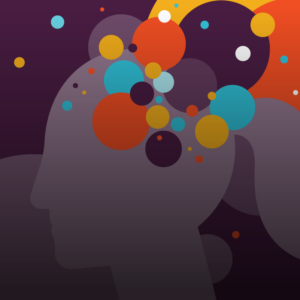Uncover everything you need to know about skills fluidity, including an actionable 5-step guide on how you can implement it and in doing so, revolutionise your approach to strategic workforce planning in 2024.
The idea of strategic workforce planning has become jaded among HRs. You’re constantly told it’s more important than ever to nail it, but actual advice for how you can action it successfully is rarely given. And so, you’re continually stranded with strategy blueprints that are:
- Time-consuming
- Abstract
- Outdated
- Unrealistic
In short, something in the model is broken. Change is needed – and this is the perfect time to get started.
Right here and now, we’re revealing an alternative approach. This blog will provide details for how you can be ready for what the future holds, with a reframed approach.

The problem with the strategic workforce planning cycle
The point of the strategic workforce planning cycle is to ensure that you have the right people with the right skills in the right positions – all to secure the long-term success of your organisation. We usually follow a process that looks a little like this…
- What are our business goals?
- What skills do we need to meet these goals?
- What skills do we have in-house?
- What skills are we missing?
From there, you hire externally, fill in the gaps and be on your way.
And in the past, it worked. So, why does it feel broken now?
In the last decade, there’s been a tidal wave of developments across the board. From the advancement and potential of AI and the increased generational diversity of teams, to the wide-scale adoption of remote work and job-hopping mentalities, it’s clear that the demands of the modern workplace have completely transformed.
And yet, how we tackle these challenges hasn’t evolved. We’re trying to fix new problems with old solutions. But here’s the thing…
As the challenges, expectations and demands of the workforce change, so do the skills needed to address them.
This is where the real problem lies.
The evolution of skills is too fast for the strategic workforce planning cycle to be effective. Because by the time you source the right talent for your specific skills gap, the goalposts have shifted again, and new obstacles have emerged.
In the meantime, every other organisation is experiencing this need for skills – which means the pool of available people with desirable skills is shrinking.
The Problem:
A rapidly accelerating and evolving demand for skills, and a diminishing external talent pool.
The Solution:
Adapt the model to a “train first” and “hire second” approach.
It’s time for…
The fluid workforce revolution
What if we stopped defining people by their job titles and instead, by their skill sets? The fluid workforce revolution offers the opportunity to do just that.
Rather than restricting your talent to the traditional set roles and progression paths of the past, you open up the opportunity for people to freely move between different positions, with skills and potential at the forefront.
When implemented effectively, skills fluidity unlocks an incredible bounty of benefits. Here are some of the biggies.
1. Transformed employee engagement
Organisations that effectively implemented skills fluidity found they were 79% more likely to provide a positive workplace experience, 98% more likely to have a reputation as a great place to grow and develop and 47% more likely to provide an inclusive environment.
2. Unlocked adaptability
Fluid workforce organisations found they were 57% more likely to anticipate change and respond effectively & efficiently.
3. Improved sourcing and talent retention
Skills fluidity meant organisations were 66% more likely to attract and retain talent, 107% more likely to place talent effectively and 98% more likely to retain high performers.
4. Efficiency & competitive advantage
Those who implemented the fluid workforce approach were 49% more likely to improve processes and maximise efficiency, giving a serious advantage against competitors.
Watch the HR Hackathon on Skills Fluidity
Our Managing Partner Jared Skey was welcomed onto this insightful webinar series, to share all the ins and outs of the potential of skills fluidity.
Watch now
But hang on…if it’s so great, why isn’t every organisation doing it?
Because it’s notoriously difficult to implement. There’s no universally agreed framework for describing skills, and as we’re experiencing with the onslaught of developments, skills are infinite and constantly evolving.
So, to understand the skills you have and the skills you need, you need complex reasoning, contextual judgement, and of course, the resources to make such deep dives possible.
Up until now, this has been enough to make skills fluidity seem like a pipe dream. But, not anymore.
Creating a future skills action plan: your 5 step guide
For the first time in history, skills fluidity is now an accessible way for your business to get ahead of the curve.
AI and big data have now made it possible for the fluid workforce revolution to take hold. Those who go with it, unleash an approach for strategic workforce planning that’s actually capable of keeping up with those modern-day challenges. Here’s how it works, in 5 steps.
1. Skills auditing at scale
Skills auditing has always been the first big obstacle in strategic workforce planning. But identifying the existing skills, knowledge, and abilities of employees, then spotting any gaps that may exist is a far more complicated activity than it sounds. But why?
Language variations
Skills evolution
Shifting challenges
Are just a few continuously moving parts to track during your audit. Trying to create a skills database around these points is pretty much impossible (or at least, impractical!). You could spend months building one and find that within weeks it becomes obsolete.
But now, thanks to AI (and some very impressive tech brains), skills auditing is finally able to keep up with the challenges. AI has been trained on skills and evolves with the changing languages, so that you can match any individual’s definitions with what you’re looking for.
For the first time ever, you can gain a realistic, accurate and objective way of matching any business need to any pool of talent, and rank them at scale.
2. Skills gap analysis and cognitive potential
Now you’re armed with this information, you can start doing a realistic skill gap analysis…but not as you know it.
With a skills-focused workforce, it’s not enough to understand the skills you have – you need to understand the potential of your people, too.
We all have different cognitive skills. By taking the time to understand the cognitive potential within your organisation, you’ll be able to spot where gaps can be filled in the future, and how quickly.
You can uncover these cognitive details using engaging games. These allow you to understand the natural abilities of your people and plan progression.
This allows you to really get into the heart of strategic workforce planning. You can pinpoint the future needs of your organisation, identify the right people within the company and prepare them for future roles, all while reducing the need to hire externally.
3. Motivation and realistic re-deployment
When your business is creating strategic plans, do you consider the individuals that make up your workforce?
We’re made up of more than skills. And by including an understanding of your teams’ individual values and motivations, you’ll naturally reveal activities and responsibilities they’ll likely enjoy.
By adding this into your strategic workforce planning process, you can, at scale, provide personalised career advice and help individuals find the best-fit positions in your organisation.
This ensures your skills-focused workforce planning is built around the individuals in your organisation – synchronising business strategy and employee satisfaction!
4. L&D integration and personalised learning
Now, we know what you’re thinking. L&D databases are just a vast collection of learning content…it’s not part of the strategy. And it’s true, too often there’s no real benefit other than fulfilling a tick box “development” exercise.
But imagine if all this content is seamlessly linked up to the individual’s skills data, personality, and the overall plan of your business.
But imagine if all this content is seamlessly linked up to the individual’s skills data, personality, and the overall plan of your business.
For individuals
They can be linked to training that sets them up for promotion or progression. They can automatically be served learning content that is tailored to them as an individual.
By framing the whole system as beneficial to the individual and helping them to genuinely progress and be satisfied within your organisation, you naturally motivate their engagement.
For the company
you can serve tailored L&D content that fills the gaps you identified in step 2.
All of this can now be done at scale using AI. Creating a personalised experience for each individual at scale, that not only benefits the individual but the whole company.
5. The adaptive mindset
Traditionally, strategic workforce plans are static – a big roadmap that’s set up and followed over a set number of years. We know this no longer works.
But if you take the integrated and personalised skills-based approach, described above, you create a fluid model that evolves and adapts as needed, while keeping on track with the long-term goals.
Once you’ve carried out a full audit on all your people, and ensured that new starters are automatically added to the system, you can rapidly get valuable people insights to any changing business needs.
Putting it into practice: a unified system
Now, you may have noticed, this 5 step plan is only as effective as the AI and resources you have available. But here’s the good news.
Coming soon: a platform that does all of the above, and more!
Designed to holistically bring all your people data together in one place, we’re revolutionising the approach to strategic workforce planning.
The Cognisess approach encompasses:
Skills portfolio
What people are capable of today, using our AI skills tool
Skills potential
What cognitive capabilities people have, using our gamified ability assessments
Skills motivation
What they will enjoy doing, using our personality and career values assessments
All of this is brought together across Talent Acquisition, Internal Mobility and L&D, to provide a unified system and a transformed approach that can make strategic workforce planning truly effective for the long term.
The fluid workforce revolution is here, will you be a part of it?
Big things are coming in 2024, and this is your chance to be a part of it.
Beta trials are coming soon – to be one of the first HR professionals to sample our integrated skills fluidity system, get in touch today at jared.skey@cognisess.com.
Want to learn more about how you can introduce skills fluidity into your organisation? Our whitepaper reveals all…
Sign up to our Newsletter
Keep up to date with a collection of articles, resources and insights for people hiring, managing and developing your people.



